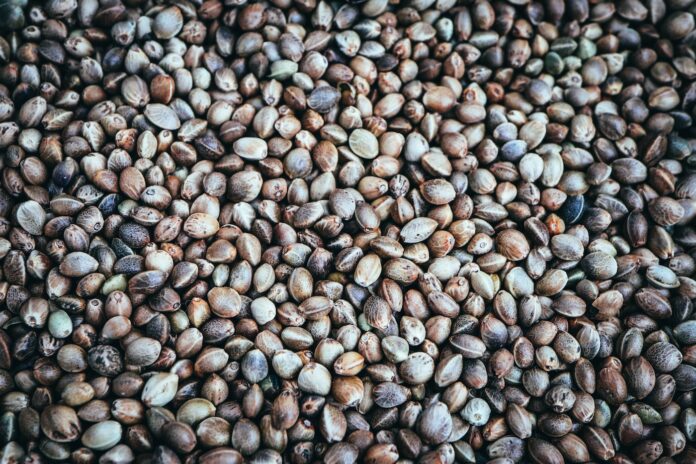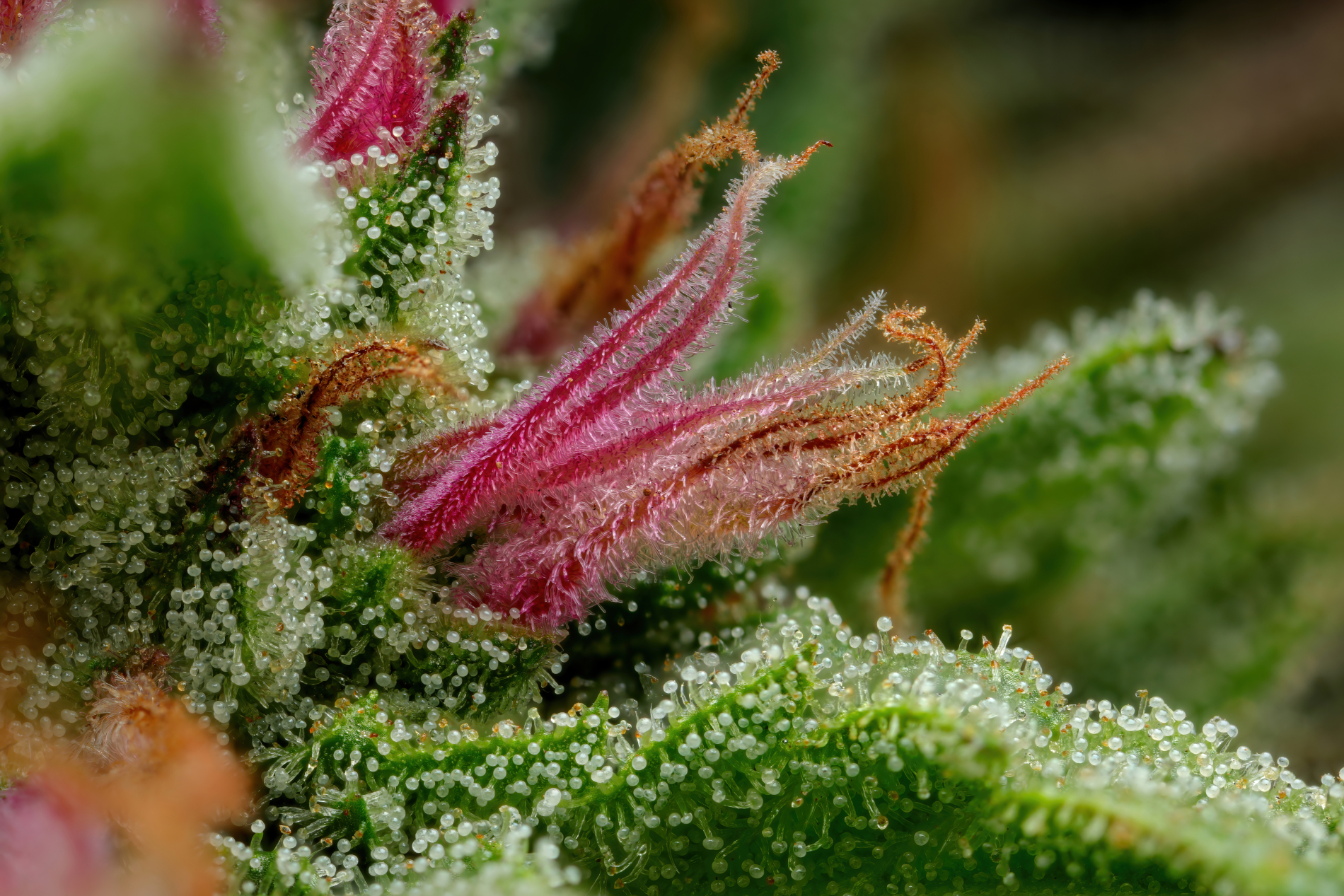
Sensimilla or “sinsemilla” is a seedless female cannabis plant bred to produce better buds, larger yields, and a more potent product.
Introduced to the legacy industry by infamous Guadalajara Cartel co-founder Rafael Caro Quintero in the 1970s, sinsemilla weed revolutionized cannabis cultivation practices, upping the ante for expected THC content, broadening awareness of cannabinoid and terpene profiles, and inspiring the continued innovation that’s taking place today.
A brief history of sinsemilla
Sinsimilla, meaning “without seeds” or “seedless,” comes from the Spanish words “sin” and “semilla.” In cannabis, the term “sinsemilla” is just that: a female plant that hasn’t been pollinated by its male counterpart.
Think of feminized seeds, but hold the seeds. Sinsemilla weed is another way to breed female-only plants, but this cultivation technique is focused on growing bud-producing female plants, all while keeping them far away from the pollinating males.
The technique is largely credited to Quintero in Sinaloa, Mexico. For Quintero, sinsemilla was an evolutionary leap in production used to expand his criminal empire and influence.
At the time, many American consumers were copping illicit products from Mexico. Quintero took it upon himself to boost his offerings with a desire for greater market share through a new cultivation method, resulting in seedless buds. Little did he know it would not only stand the test of time but inspire the entire industry to adapt and keep evolving in response.
The infamous drug lord behind the kidnapping, torture, and killing of a U.S. DEA agent in 1985 was captured by Mexican forces in 2022 after spending five years on the FBI’s top ten most wanted list. Quintero was convicted of kidnapping and murder in 1985 but released from prison after 28 years when a Mexican court overturned his conviction, stating he was tried improperly in a federal court for state crimes. The U.S. government believed Quintero ran his empire from behind bars, using at least six family members to help launder millions of dollars through multiple businesses. Days after his release, a federal court granted the Office of the General Prosecutor an arrest warrant against Quintero at the request of the U.S. government.
Since sinsemilla is unpollinated and therefore not pushed to produce buds full of seeds, the plant can instead focus its energy solely on bud development. As a result, sinsemilla contains a much higher concentration of cannabinoids and terpenes. A 1980s American study revealed that sinsemilla weed contained around 6 percent THC, which was astounding compared to street weed’s 1.8 percent maximum at the time.
The rest is history. Once breeders found a consistent method to separate male plants from females for optimized quality, they never looked back. Higher potency went from an incredible possibility to a baseline expectation on farms around the world, leading us down the road to beautiful cannabis buds that are both Instagram-worthy and jam-packed with desirable cannabinoids and terpenes.
The benefits of sinsemilla
Amazing things can happen when cannabis plants produce seedless flower, which is being explored by today’s industry in new and innovative ways.
Efficient production
Producing seeds for natural reproduction requires the use of limited resources within a plant, resources that could be applied to more desirable outcomes for cultivators and consumers. Culling male plants takes those reproductive expectations away from the females, which means they can take a nice, deep exhale and focus on the real bread and butter of today’s industry: robust cannabinoid and terpene production.
Better quality
A stronger focus on cannabinoid and terpene profile development means bigger flavor, better aroma, and heightened effects—optimal for cultivator profits, consumer enjoyment, and medical applications.
Stronger potency
This goes hand in hand with those boosted profiles, but it’s more specific to cannabinoids—namely THC. Remember: sinsemilla comes with a much higher THC content, which means consumers enjoy greater potency from the product.
Bigger yields
Not having to worry about male and female cannabis plants and how they pollinate means cultivators can focus solely on production quality and quantity. That results in more plants, more products, and more loyal customers to shout a brand’s name around town.
The return of F1 cannabis seeds
Growing sinsemilla cannabis is something of a throwback, but it remains relevant for how it has inspired today’s expected potency level and product quality.
F1, which stands for “filial 1,” describes the first generation of progeny between two distinct inbred lines. Essentially, they’re the result of two genetically distinct inbred plants that have undergone at least 20 generations of brother-and-sister or offspring-and-parent mating lines.
This method of breeding results in heterozygous traits—a.k.a., increased genetic diversity, higher yields, and stronger plants. The F1 technique is used to grow types of cannabis that are uniform, disease-resistant, and very potent—it continues down the road sinsemilla and seedless cannabis flower started to pave in the 1970s.
F1 hybrids seem to be making a comeback as breeders aim for even more variety, potency, and stability among today’s products, and that might be what’s inspired cultivation’s latest evolution with triploids.
Triploids for 2024
The final breeding boss—at least for now—cannabis triploids are gaining steam at the forefront of cannabis production. The result of a cross between a standard diploid plant and a tetraploid, which contains an extra pair of chromosomes, triploids are potent, full-spectrum, and seedless.

These plants feature all of the required trappings of high-quality weed and are possibly the future of cultivation. Triploids do occur naturally, but it’s quite rare—about as rare as the coffee lover’s ever-coveted peaberry. Rather than waiting around and hoping for production, breeders are beginning to take the development of triploid plants into their own hands, rendering them more widely available and recognized among consumers and operators alike.
“Until now, triploids have been a rare, random, and special occurrence in cannabis flower, but today’s commercial growers are embarking on intentional ways to produce nearly seedless cannabis for a few different reasons,” said Ben Lind, co-founder and chief science officer at Humboldt Seed Company. “When we take a look at other species that have been bred as polyploids, the main benefits tend to be higher yields and an increase in secondary metabolites. In the case of cannabis, that means the potential for elevated cannabinoids, increased terpene levels, and larger trichomes. That’s the big goal everyone is aiming for with triploid breeding.”
What sinsemilla started, triploids aim to finish. With that in mind, today’s high-THC content could be surpassed as triploids make their way to center stage and raise the community standard for what’s bunk, what’s fire, and what will best enable cultivators to access the retail success and product acclaim so many desire.
